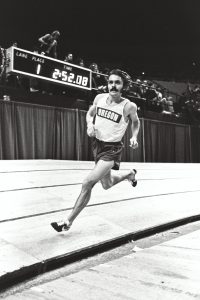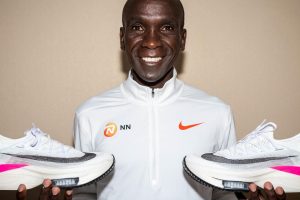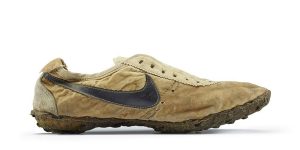Alan Jenks
Is barefoot running better for you than running in shoes (shod)? Are shoes with more or less cushioning better for preventing injury? Should you be landing on your forefoot or your heel when running? Researchers and shoe companies alike have been continually investigating these questions since Steve ‘Pre’ Prefontaine started gaining media coverage in the 1970s for setting running records wearing Nike shoes. This led to a ‘running boom’ and suddenly everyone, from elite athlete to average joe, was trying to ‘Run like Pre’. Pre’s running career was tragically cut short by his untimely death in an automobile accident at the age of 24 in 1976, however he left his mark on the running world, which was forever changed by the idea that shoes can contribute to athletic performance and injury prevention.

Now, in the time that Pre was running, most of the world was running in a version of the Nike Converse All Stars. A flat bottom, zero cushion shoe. Fast forward to today and another Nike athlete, Eliud Kipchoge, did the impossible, completing a full marathon (42.2 km) in under 2 hours, while wearing a shoe specifically designed for him by Nike called the Alphafly-also called the Next%- (Nike later released a consumer version of this shoe called the Vaporfly).
This shoe has been banned from international competition because it gives the athlete an unfair advantage and harnesses the power of physics to provide a ‘boost’ of 4-6% in athletic performance. In fact, athletes wearing this footwear took 31 of the 36 top-three finishes in major marathons in 2019, and Brigid Kosgei wore a Vaporfly prototype when she broke Paula Radcliffe’s womans marathon record in 2019.
The Vaporfly technology includes a massive sole made of ‘energetic foam’ and a carbon plate, both of which are designed to direct momentum and increase energy return.
The shoe Kipchoge wore to set the marathon record had a sole height (stack height) of 40 mm and included ‘air bags’ in the forefoot that were designed to both cushion and add push-off force.
Compare this to Prefontaine’s stack height of 6 mm, no carbon plate, and very little technology and one is left to wonder if Pre could have given Kipchoge a run for his marathon money if this technology was available in the 1970s (and if Pre ran the marathon distance).

Why is this story important for us? Well, the humble Force Plate has played a role in the development of many a shoe. Since Pre made us obsessed with running in the 1970s we have started to add words like ‘Ground Reaction Forces’ to our vocabularies in an attempt to increase performance while mitigating injuries. Shoe companies have taken risks and released minimalist shoes with zero cushioning, only to be ruined as, while they worked for athletes, they injured the average runner. Throughout the evolution of the running shoe, we have returned, time and time again, to the force plate.
In lab today we will use the force plate to examine the forces exerted on us by the ground (the ground reaction force – GRF) in accordance with Newton’s Third Law for every action there is an equal and opposite reaction. In running Newton’s Law has to be true as we strike the ground, the ground has to push back on us or we would sink into it. Shoes, however, have technology that allow us to cushion these forces, store energy, and then release it as we push off. We can visualize this using force plates.
Force plates have a plethora of uses beyond examining running shoes and gait. Any force applied to, or by the body can be measured as well as moments, centre of gravity identification, symmetry, balance, the list goes on.
The force plate is a mechanical sensing system that relies on a load cell to determine forces. The load cells may contain piezoelectric elements, strain gauges or beam load cells, and as force is applied to the plate, the sensors distort, thereby creating measurable changes in voltage that are proportional to the applied force. The sensors are placed in such a way that the direction and magnitude of forces in 3D can be obtained.
 Additional information can be derived from the force plate, like vertical jump height, if we use some biomechanics and math!
Additional information can be derived from the force plate, like vertical jump height, if we use some biomechanics and math!
Luckily much of the math will be done for us today as we examine walking and running gait in various shod and unshod conditions. The force plate will connect to a digital display and the force encountered will be expressed as a visual graph showing the GRF per second.
While much of this lab is about introducing you to the actual use of the force plate and execution of the methodology, keep Pre in the back of your mind as you go through this lab and try to appreciate the forces his body underwent running in a flat, non-cushioned shoe, on his way to becoming an Olympic champion.

**note this is not Pre’s shoe. This is the shoe worn by another athlete, Bruce Mortenson, during the 1972 Olympic trials. Bruce was a marathon runner, also a Nike athlete, and completed the Boston Marathon in 1972 in a time of 2:19:59. He was 6th overall.**
Media Attributions
- IM12880_native_1600
- https___hypebeast.com_image_2019_10_eliud-kipchoge-sub-two-hour-marathon-record-history-nike-vienna-0
- maxresdefault
- moon-shoe-left-medial-1484933999

